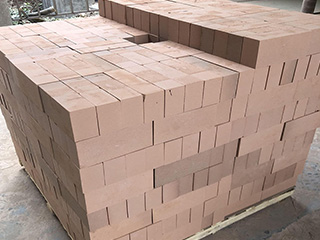Refractory bricks are essential components of high-temperature applications, such as furnaces, kilns, and incinerators. They provide insulation and resistance to thermal shock, chemical attack, and mechanical wear, ensuring the stability and durability of the equipment. In this article, we will discuss the materials, techniques, and trends in refractory brick manufacturing.
Materials Used in Refractory Brick Manufacturing
The choice of materials for refractory brick manufacturing depends on the specific requirements of the application, such as temperature range, chemical resistance, and mechanical properties. Some of the commonly used materials for refractory brick manufacturing include:
1.Fireclay: Fireclay is a type of natural clay that has a high content of aluminum and silica. It is a cost-effective material that is ideal for low-temperature applications, such as fireplace linings and ovens.
2.Silica: Silica is a hard and brittle material that is resistant to thermal shock and chemical attack. It is ideal for use in high-temperature applications such as glassmaking and metallurgy.
3.Alumina: Alumina is a strong and durable material that is resistant to thermal shock, chemical attack, and abrasion. It is ideal for use in high-temperature applications such as steelmaking and petrochemical processing.
4.Magnesia: Magnesia is a lightweight and durable material that is resistant to thermal shock and chemical attack. It is ideal for use in high-temperature applications such as cement production and non-ferrous metal processing.
5.Zirconia: Zirconia is a strong and durable material that is resistant to thermal shock, chemical attack, and abrasion. It is ideal for use in high-temperature applications such as ceramics and electronic components.

Techniques Used in Refractory Brick Manufacturing
The manufacturing of refractory bricks involves several techniques, including:
1.Mixing: The raw materials are mixed in specific proportions to achieve the desired properties and consistency.
2.Molding: The mixture is shaped into bricks using different techniques such as pressing, extrusion, and slip casting.
3.Drying: The bricks are dried to remove moisture and improve their strength and stability.
4.Firing: The bricks are fired in kilns at high temperatures to improve their strength, stability, and resistance to thermal shock.
5.Finishing: The bricks are cut and finished to specific sizes and shapes for installation in the equipment.
Trends in Refractory Brick Manufacturing
The manufacturing of refractory bricks is a highly specialized and technical process, and there are several trends in the industry to improve their performance, durability, and cost-effectiveness. Some of the notable trends in refractory brick manufacturing include:
1.Development of advanced materials: Researchers are developing new materials with improved properties, such as higher strength, lower thermal conductivity, and better resistance to chemical attack.
2.Use of advanced manufacturing techniques: Manufacturers are using advanced techniques such as 3D printing and robotics to improve the precision and consistency of refractory brick manufacturing.
3.Emphasis on sustainability: Manufacturers are focusing on using sustainable materials and reducing waste and emissions in the manufacturing process.
4.Increased customization: Manufacturers are offering customized refractory bricks to meet the specific requirements of different applications, such as size, shape, and thermal conductivity.
5.Integration of digital technologies: Manufacturers are using digital technologies such as artificial intelligence and the internet of things (IoT) to improve the efficiency and effectiveness of refractory brick manufacturing.
Conclusion
Refractory bricks are essential components of high-temperature equipment, providing insulation and resistance to thermal shock, chemical attack, and mechanical wear. The manufacturing of refractory bricks involves the use of different materials and techniques, depending on the specific requirements of the application. There are several trends in refractory brick manufacturing,including the development of advanced materials, use of advanced manufacturing techniques, emphasis on sustainability, increased customization, and integration of digital technologies. These trends are aimed at improving the performance, durability, and cost-effectiveness of refractory bricks, ensuring their continued use in high-temperature applications. As the demand for high-temperature equipment continues to grow, it is expected that the manufacturing of refractory bricks will continue to evolve, incorporating new technologies and materials to meet the changing needs of the industry.
Contact: Mgr. Han
Phone: 0086-13589497465
Email: 1255953279@qq.com
Add: Industrial Area of Lingzi Town,Zichuan District,Zibo City, Shandong,China